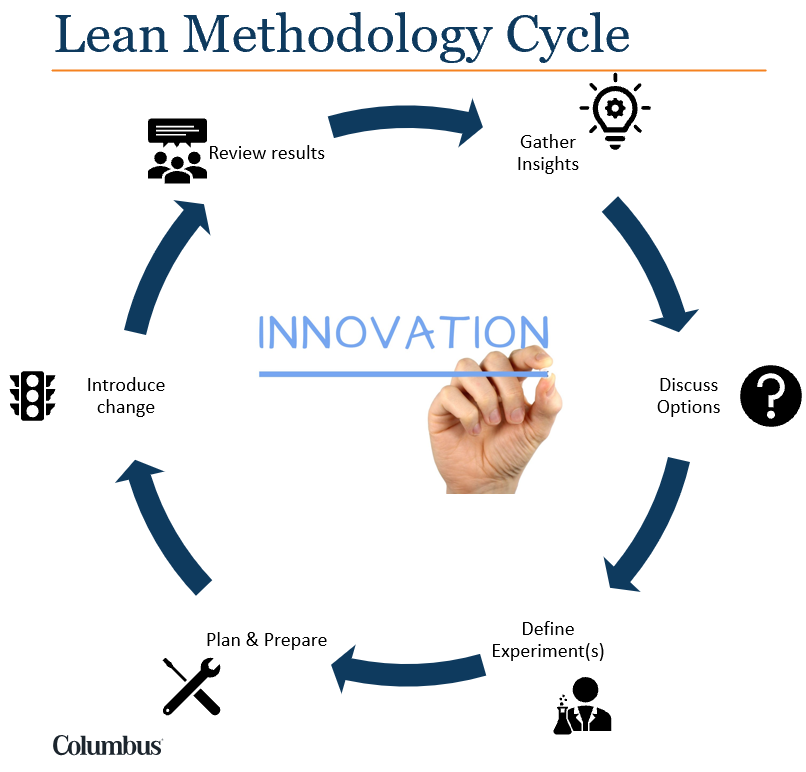There’s no lack of a sense of urgency. Faced with workforces that are anxious about health and safety, their job security and even the viability of your current way of doing business, senior leadership needs to quickly find a way forward. How can you swiftly capture that imperative to do things differently, and mould it into robust new processes and tech that won’t put you at even greater risk?
In this post, we examine how you can bring together a process for managing rapid change, with the right tech, together with your trump card. It’s the untapped knowledge within your organisation’s greatest asset AKA your people.
1. Look to those who know best

Those closer to the front line hold the key. So, engaging your team in a new, speedier way of putting change in place is necessary.
But you don’t have time to invent a new way of working with which to make change happen.
Organisations like leanchange.org can give you the tools required to get started on defining business problems, discussing insights about them and most importantly, getting those at the coal face to enact quick experiments aimed at providing the fix.
2. Use the right tech at the right time

A lean change cycle, like that defined above, will result in you having cherry-picked some quick wins. It will also highlight the need for new or changed systems to support these new business challenges.
Right now, you might be facing issues like:
- How do we fast track quality inspection and get goods out faster?
- How can we run a field service operation with social distancing in place using automation?
- Can I make it easier for customers to process returns without troubling the call centre?
All of the above have potential solutions that your team could build with an agile implementation approach and tools such as the Power Platform.
However, making a change to a transactional system, such as your ERP, can be a time-consuming process. Preserving future upgrade paths is also an ever-present concern.
With Power Apps and Automate, you can combine the knowledge of your operational team with a set of features that allow them to create new functionality fast. In truth, building an app that stores data securely and flows that information around the business has never been easier.
Strategically enabling a team of citizen developers around your key departments (that can apply lean change techniques to get things done) could be a key tool in adapting your operations to the new reality. You can put in place interim solutions and continue to refine as things develop.
3. Don’t throw best practice to the wind

Faced with a new world, where citizen developers are springing up around your offices and whiteboards are abuzz with new ideas, how do you ensure this seemingly uncontrolled approach doesn’t get you further into hot water?
Will the need to move quickly hinder your ability to keep the evergreen status of your key cloud apps intact?
Even though tools like Power Platform can be a game changer as they make rapid digital transformation a reality, they do have all the features and functions needed to manage application lifecycles perfectly well. Software testing still happens in a safe environment, you segregate data as needed and you manage security in a familiar way that integrates with what you already have.
Policing this has always been the role of the IT team and enabling them alongside your new operational transformers will be key to keeping everyone pulling in the same direction.
Make lean change your first lean change initiative
The world has changed forever. As effective leaders, we have no choice but to seek the opportunities among the challenges.
Don’t forget the same challenges will also be hurting your competition so be the business that doesn’t let a good crisis go to waste. Customers and employees will remember you for strong leadership during these difficult days.
So, act now to get ahead with a renewed sense of purpose and make a rapid digital strategy your statement of intent. We’re all in this together and together we will make it through.
Interested in putting together the ideal digital change strategy or improving your current one? Click here to find out more about the Columbus Lean Business Accelerators for Power Platform. Our range of consulting and training options take you from digital whiteboarding to secure deployment in days, rather than weeks.
We also have an on-demand video workshop where we walk you through how to transform your business operations with Power Apps. Watch the video via the button below and let’s enable your future together.

